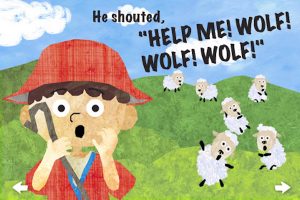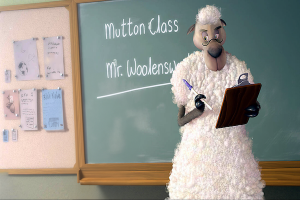 Crying Wolf: The Impact on Trust
Crying Wolf: The Impact on Trust
Crying wolf is a phrase derived from the story of The Boy Who Cried Wolf, in which a young shepherd boy repeatedly raises false alarms about a wolf attacking his flock. Eventually, when a real wolf appears, nobody believes the boy’s cries for help. In a work setting, crying wolf can manifest itself in consistently exaggerating the urgency or importance of tasks or issues.
This behavior erodes trust among colleagues, as they become desensitized to the individual’s warnings and may fail to take genuine concerns seriously.

The Need to Always Be Right: A Path to Conflict
The need to always be right is a common trait among some individuals, often driven by a desire for control or validation. This can be particularly damaging in a work environment, as it can lead to unnecessary conflicts, strained relationships, and an overall decrease in productivity and morale.
Confirmation Bias and Cognitive Rigidity
Two psychological factors that contribute to the need to always be right are confirmation bias and cognitive rigidity. Confirmation bias occurs when an individual selectively seeks out information that supports their pre-existing beliefs, while disregarding any evidence to the contrary. Cognitive rigidity refers to an unwillingness or inability to change one’s beliefs or perspectives in the face of new information. Both of these factors can exacerbate the need to always be right, further complicating workplace dynamics.

Lack of Research and Skepticism: The Importance of Due Diligence
One of the most important lessons from the story of Chicken Little is the value of conducting research and being skeptical before accepting information at face value. In the workplace, taking the time to thoroughly investigate and verify information can prevent costly mistakes, improve decision-making, and foster a culture of critical thinking and accountability.
Encouraging a Culture of Inquiry
Promoting an environment where employees feel comfortable asking questions and seeking out accurate information can greatly benefit an organization. Encouraging a culture of inquiry not only leads to better decision-making but also helps to build trust and collaboration among team members.

Lessons from Chicken Little: Applying the Fable to the Workplace
The story of Chicken Little offers several valuable lessons that can be applied to modern work environments. By learning from the mistakes of Chicken Little and her fellow animals, we can take steps to create a more positive, productive, and calm atmosphere in our own workplaces.
1. Maintain a Sense of Perspective
One of the key lessons from Chicken Little is the importance of maintaining perspective in the face of challenges. By taking a step back and assessing situations objectively, we can avoid falling into the trap of catastrophizing and ultimately make more informed decisions.
2. Foster Open Communication
Encouraging open communication among team members can help to prevent the spread of misinformation and unnecessary panic. By promoting a culture of transparency and honesty, employees will be more likely to trust one another and work together effectively.
3. Encourage Personal Accountability
Holding oneself accountable for one’s actions is a crucial component of a healthy work environment. By taking responsibility for our mistakes and learning from them, we can grow both personally and professionally.
4. Promote Critical Thinking and Skepticism
Fostering a culture of critical thinking and skepticism can help to prevent the spread of misinformation and improve overall decision-making. By encouraging employees to question assumptions and verify information, we can create a more informed and effective workforce.
5. Be Mindful of Emotional Contagion
As demonstrated in the story of Chicken Little, emotions can be contagious. By being mindful of how our own emotions may influence those around us, we can take steps to create a more calm and supportive work environment.
6. Practice Empathy and Compassion
Understanding that some individuals may struggle with catastrophizing or the need to always be right due to past trauma or stress can help to foster a more empathetic and compassionate work environment. By approaching these situations with understanding and patience, we can promote a more inclusive and supportive atmosphere.
7. Value Evidence-Based Decision-Making
Valuing evidence-based decision-making can help to prevent the spread of misinformation and ensure that the best possible choices are being made for an organization. By prioritizing accurate information and thorough research, we can make more informed decisions and contribute to a more successful workplace.
8. Avoid Excessive Urgency
Constantly labeling tasks or issues as urgent can lead to a culture of panic and stress. By being mindful of the true urgency of situations and prioritizing tasks accordingly, we can create a more balanced and calm work environment.
9. Embrace Flexibility and Adaptability
Being flexible and adaptable in the face of new information or challenges is a valuable skill in any work environment. By embracing change and being open to new perspectives, we can foster a culture of growth and innovation.
10. Model Calm and Rational Behavior
Finally, modeling calm and rational behavior in the face of challenges can help to set the tone for a more positive and supportive work environment. By remaining composed and level-headed, we can encourage others to do the same and ultimately contribute to a more productive and harmonious workplace.
In conclusion, the story of Chicken Little offers a wealth of wisdom that can be applied to modern work environments. By learning from the mistakes of the fable’s characters and applying these lessons to our own lives, we can create a more positive, productive, and calm atmosphere in our workplaces, ultimately benefiting both ourselves and our colleagues.





 What is Catastrophizing?
What is Catastrophizing? Crying Wolf: The Impact on Trust
Crying Wolf: The Impact on Trust

